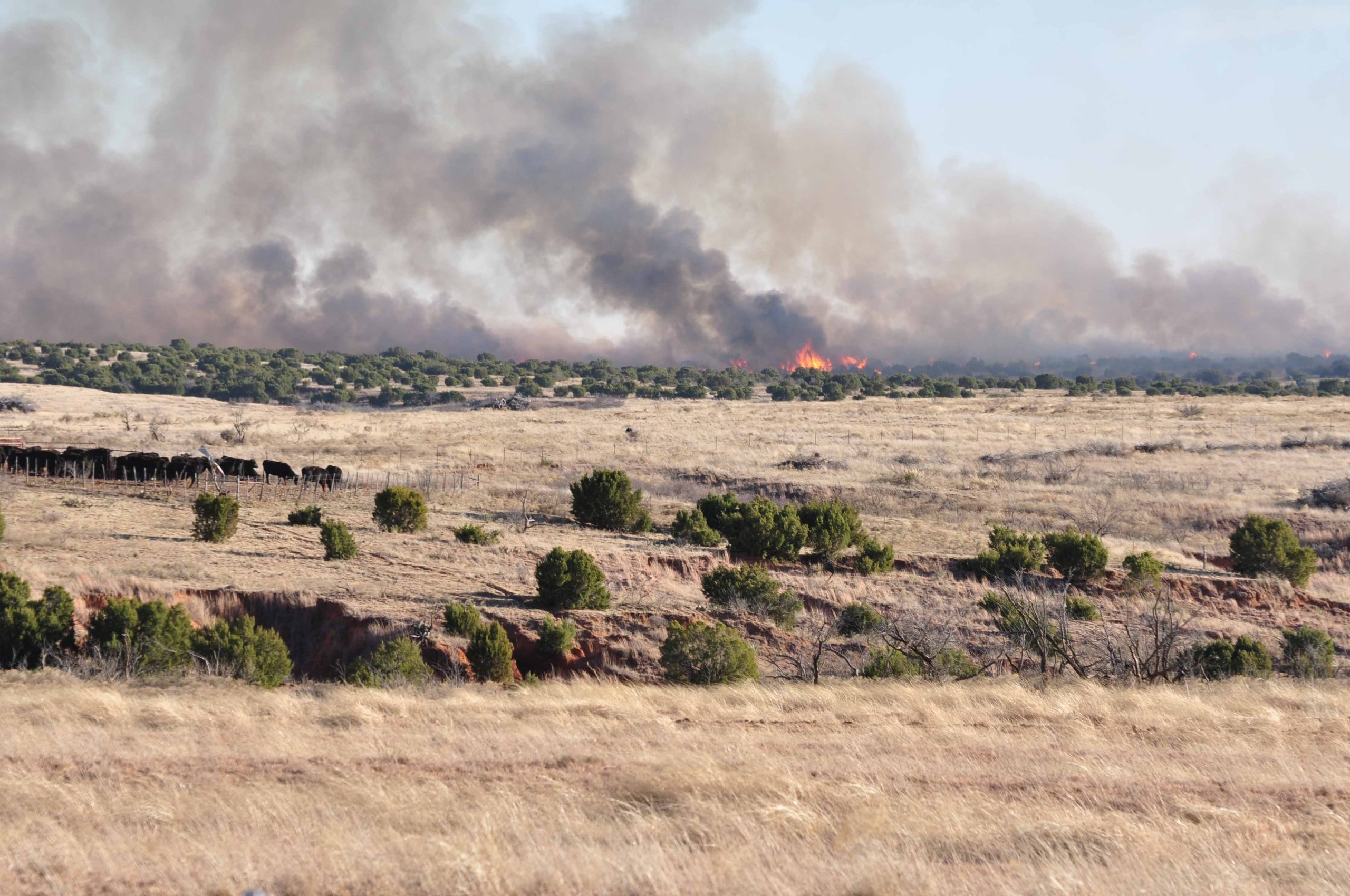Learning from wildfires helps farmers, ranchers deal with the aftermath

A million acres burned is hard to fathom.
But for those Texas Panhandle residents who lost homes, farms, ranches and livestock during the early 2024 Smokehouse Creek fire, it was personal. The Smokehouse fire and a series of other fires burned more than a million acres across several counties.
Many are still likely picking up the pieces.
Morgan Treadwell, professor and Extension range specialist, Texas A&M AgriLife Extension Service based in San Angelo, Texas, said her top five recommendations to protect rangeland from wildfire would include planning, aligning management with weather, roadside etiquette, equipment preparation and communication.
“Be prepared. Plan. Plan. Plan. Plan. And plan some more,” she said. “Many folks that have experienced previous wildfires have brainstormed ranch and family plans that are actionized when fuels began accumulating and drying spells extend indefinitely.”
Some people call those types of things an After Action Review. Analyze what worked well and what didn’t, think about it in the context of future responses, and discuss it with family members, she said.
“A dear friend and colleague will often lecture and emphasize the PACE method when there are a lot of moving pieces to plan for like family, livestock and headquarters,” she said. “Primary, Alternate, Contingency and Emergency (PACE) planning helps ensure well-thought-out grazing plans, rotations, fuel loading, proximity to headquarters, anything that can be used as advantages to buffer from wildfires and lessen the wildfire impact.”
When factors like lack of rain, forage, drought and fuel all line up, so should management, according to Treadwell.
“The earlier, the better, too,” she said. “Recognize fire fuel accumulations quickly, and spring into hoof action as much as possible. Identify pastures as opportunities that could be flash grazed to knock back dormant vegetation.”
If pastures happen to be understocked, take advantage of resources that will attract the livestock—salt, mineral, cake, hay, etc.—to keep them in those priority areas to get the desired hoof action.
“Cattle are one of the most powerful tools we have in instantaneously reducing fuel loads,” she said. “The earlier the start in fire-proofing priority areas, the more successful the PACE plan will be.”
Be sure to share plans with first responders so that those previous management decisions can be advantageously used during a wildfire, if need be, she added.
Pastures that happen to be along busy highways or county roads should be prioritized with grazing rotations to help reduce fuel loads because increased ignitions happen to occur alongside roads.
“Fires started from cigarettes, dragging chains or flat tires typically start small and easily put themselves out with a break in fine fuel,” Treadwell said. “Roads along the perimeter of pastures should be maintained or improved prior to fire season in order to strategically utilize (them) as anchor points in containing fires to single pastures.”
Another suggestion is to keep equipment “ready to roll,” she said.
“From sprayers to blades to drip torches, keep equipment as mobile and ready to deploy as much as possible,” she said. “This can be tricky during the winter but is advantageous when considering how quickly environmental conditions change.”
Probably the most important task of all is communication. Talk with neighbors and share plans, and don’t forget to include first responders.
“Sharing information on grazing plans, improved roads, resources available, equipment and communication strategies are all good conversations to have before the fire line,” Treadwell said.
For continued range health, there are several considerations. In a variable environment, fire will behave uniquely to the situation, but in the end it all depends on rainfall.
“Adaptively managing, reading and assessing that post-fire environment based on resources received is the cornerstone of stewardship,” she said. “Factors to consider in fire dependent systems like grasslands will look much differently in areas that do not have fire-adapted plant strategies and mechanisms in place.”
For Treadwell, the Smokehouse Creek fire was one she grieved and hated.
“That was an incredibly traumatic wildfire with energy and intensities that were inconceivable, but as much as I hated that wildfire, I am in awe of it, mostly by the plant community response,” she said.
Native perennial grasses in the panhandle are some of the “hardest, toughest, most-resilient species,” she said.
“It is very promising to see that within a growing season, not even a full year, the biodiversity and composition of species responding,” she said. “All of which depends on the steward’s decision to nurture that post-fire environment.”
As much as a wildfire takes a toll on the environment, it also hits the people hard, too. Mental health needs to recover as well.
“If anybody understands those no-words situations, it is ranchers. (They) just roll sleeves up and start getting the job done,” she said. “The heart of a rural community rooted in agriculture is a special one and we see countless examples of selfless service occur after every wildfire.”
All the loss is important to recognize, Treadwell said.
“But I think as scientists, as agriculturalists, we have to acknowledge and respect the profound and immediate loss, stress and overwhelming hardships wildfire aftermaths create that sometimes stay well after the rangeland has recovered,” she said.
Kylene Scott can be reached at 620-227-1804 or [email protected].



